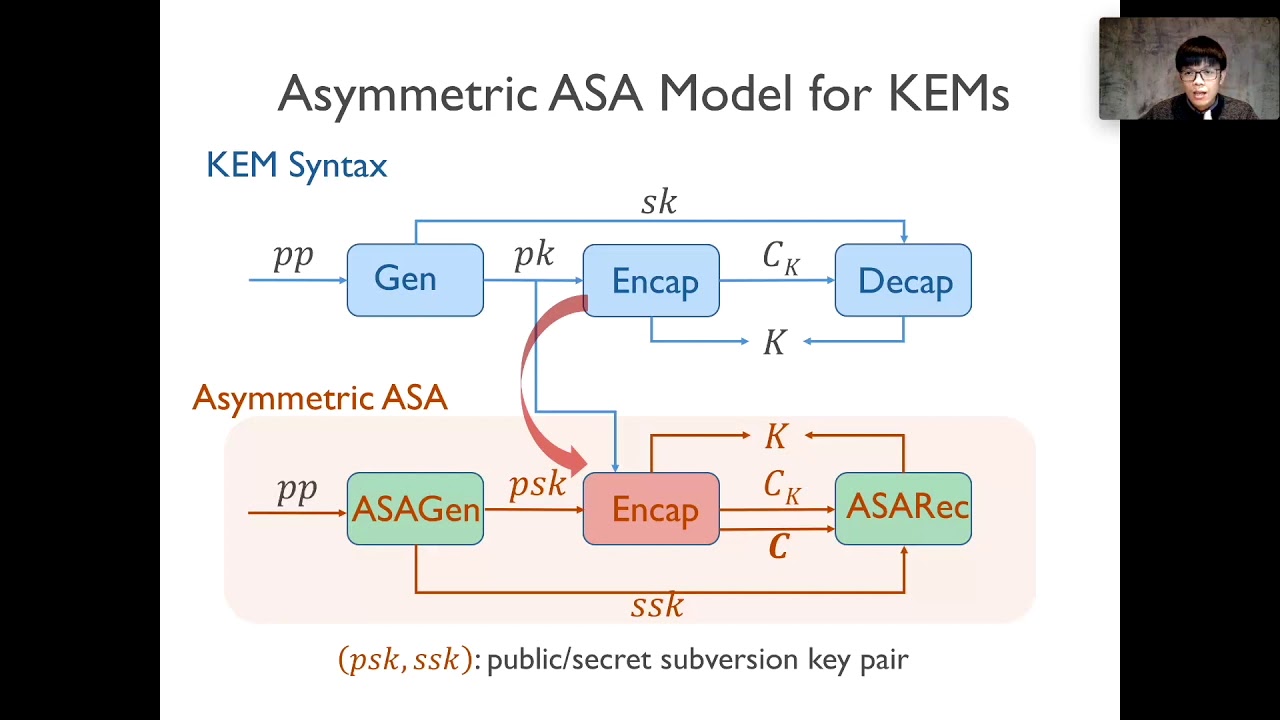Welcome to the resource topic for 2020/1079
Title:
Subvert KEM to Break DEM: Practical Algorithm-Substitution Attacks on Public-Key Encryption
Authors: Rongmao Chen, Xinyi Huang, Moti Yung
Abstract:Motivated by the currently widespread concern about mass surveillance of encrypted communications, Bellare \emph{et al.} introduced at CRYPTO 2014 the notion of Algorithm-Substitution Attack (ASA) where the legitimate encryption algorithm is replaced by a subverted one that aims to undetectably exfiltrate the secret key via ciphertexts. Practically implementable ASAs on various cryptographic primitives (Bellare \emph{et al.}, CRYPTO’14 & ACM CCS’15; Ateniese \emph{et al.}, ACM CCS’15; Berndt and Liśkiewicz, ACM CCS’17) have been constructed and analyzed, leaking the secret key successfully. Nevertheless, in spite of much progress, the practical impact of ASAs (formulated originally for symmetric key cryptography) on public-key (PKE) encryption operations remains unclear, primarily since the encryption operation of PKE does not involve the secret key, and also previously known ASAs become relatively inefficient for leaking the plaintext due to the logarithmic upper bound of exfiltration rate (Berndt and Liśkiewicz, ACM CCS’17). In this work, we formulate a practical ASA on PKE encryption algorithm which, perhaps surprisingly, turns out to be much more efficient and robust than existing ones, showing that ASAs on PKE schemes are far more effective and dangerous than previously believed. We mainly target PKE of hybrid encryption which is the most prevalent way to employ PKE in the literature and in practice. The main strategy of our ASA is to subvert the underlying key encapsulation mechanism (KEM) so that the session key encapsulated could be efficiently extracted, which, in turn, breaks the data encapsulation mechanism (DEM) enabling us to learn the plaintext itself. Concretely, our non-black-box yet quite general attack enables recovering the plaintext from only two successive ciphertexts and minimally depends on a short state of previous internal randomness. A widely used class of KEMs is shown to be subvertible by our powerful attack. Our attack relies on a novel identification and formalization of certain properties that yield practical ASAs on KEMs. More broadly, it points at and may shed some light on exploring structural weaknesses of other ``composed cryptographic primitives,‘’ which may make them susceptible to more dangerous ASAs with effectiveness that surpasses the known logarithmic upper bound (i.e., reviewing composition as an attack enabler).
ePrint: https://eprint.iacr.org/2020/1079
Talk: https://www.youtube.com/watch?v=oypiEZL99MA
See all topics related to this paper.
Feel free to post resources that are related to this paper below.
Example resources include: implementations, explanation materials, talks, slides, links to previous discussions on other websites.
For more information, see the rules for Resource Topics .
